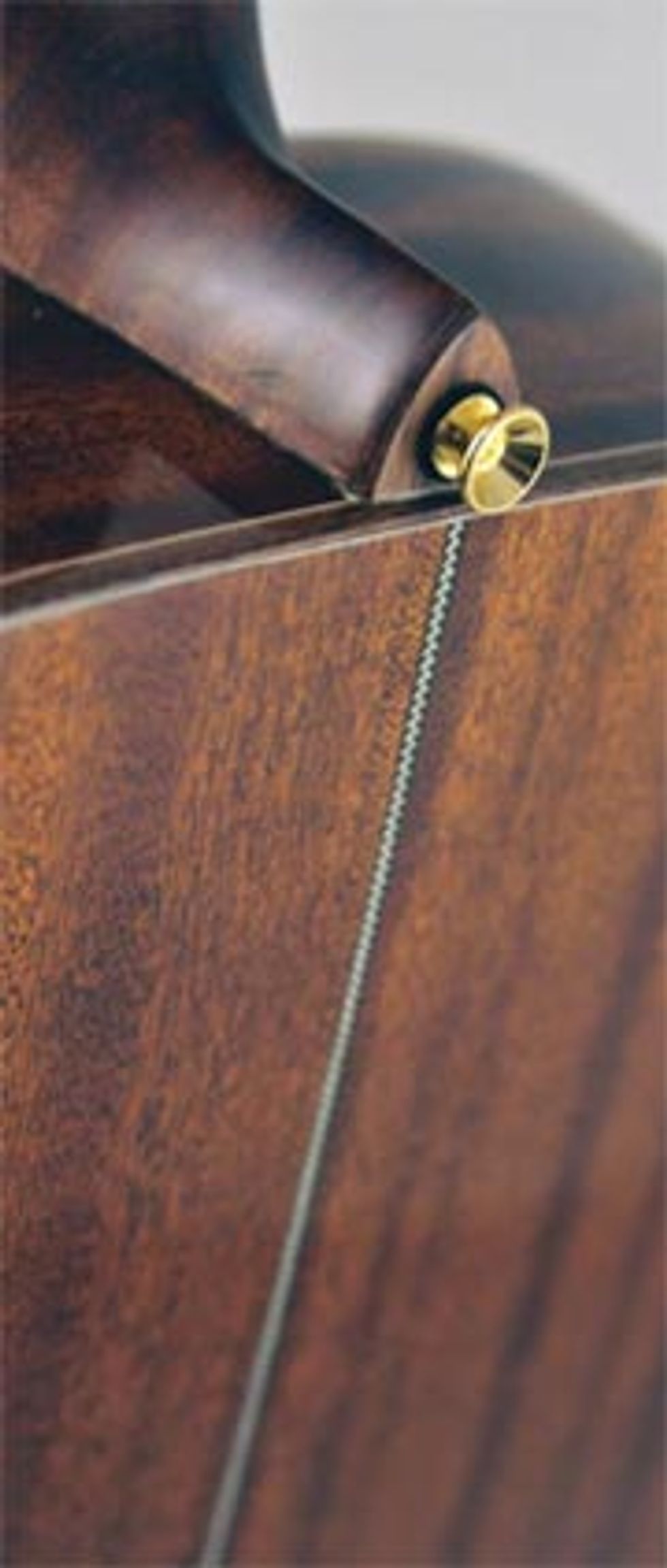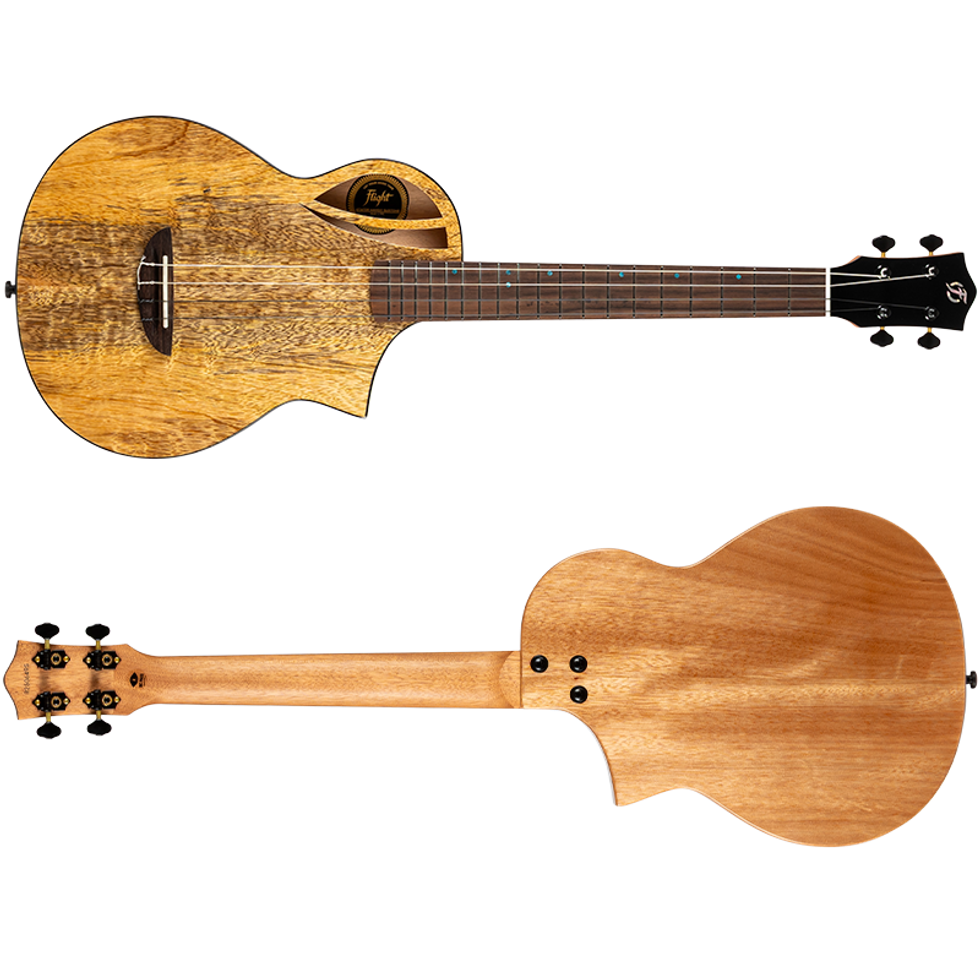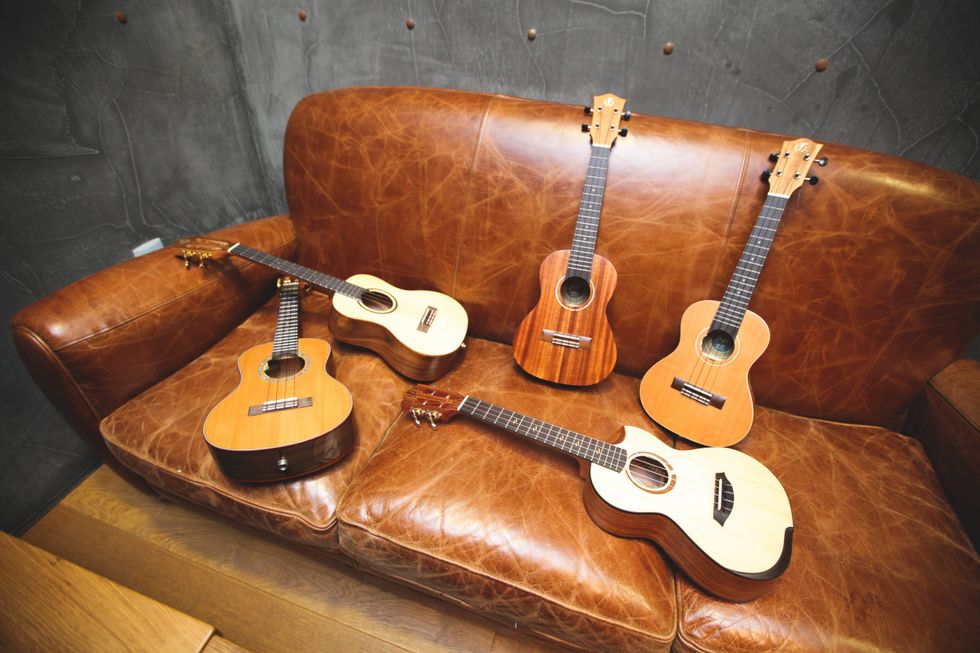The joke, of course, goes something like this. A man loses an eye and can’t afford a realistic glass replacement, so he gets a wooden eye and becomes self-conscious and defensive. One day while riding the bus, a woman with really large ears gets on. He asks her if she would like the open seat next to him. With excited appreciation, she responds, “Would I!” Thinking she’s making fun of him, the offended man counters with “Big Ears!”
The process of building an acoustic guitar is amazing. When choosing a type of wood for guitar, many factors come into play, but what the wood looks like is certainly the first indication of the quality. This is where the mysterious journey of creating a guitar begins, eventually ending with thin pieces of these select woods held together with glue, making for a beautiful sound. The guys that do this well have a wood eye and big ears! 
Let’s start with mahogany. It is the most commonly used hardwood for guitar backs and sides because it’s relatively economical, durable, attractive, easy to work with and resonant. Mahogany is also known for its fast response and good balance, and is the most stable wood used for backs and sides. Mahogany is also used for necks because it is stable, strong and lighter in weight. Most hardwoods fall somewhere between rosewood and mahogany both in density and predictability of tone.
Rosewood is one of the most dense and heavy woods. You will commonly see Indian rosewood in modern acoustics, but there are still rare pieces of Brazilian rosewood floating around. Brazilian rosewood guitars typically sell for higher prices and are known for a sweeter, fuller, and more even sound. Lately, Madagascar rosewood is turning up more and more, often being touted as the new Brazilian. It is generally considered that the darker the rosewood, the denser it is and the more it will emphasize bass. Cocobolo resembles Brazilian rosewood, but is somewhat heavier, harder to work with and less stable.
Walnut falls into the same category as mahogany, producing a mellow instrument with dark, eye-catching grain. Walnut is a naturally pleasant sounding wood whose tone markedly deepens with age. Like maple, it is also stable enough to use in guitar necks.
Maple seems to live in a world of its own. It makes for a great sounding guitar with good projection and generally has a bright, fast and balanced tone. Maple is favored in the construction of jazz guitars because of its bright, dry and precise tone. As I mentioned, it is also commonly used for guitar necks.
Koa is a gorgeous wood with well defined curly and flamed grain patterns as found in instrument quality maple. It falls in the middle of the tonal spectrum, giving the instrument a brightness of tone without sacrificing warmth. It is slightly less round in tone than the rosewoods.
Spruce tops are the standard for acoustic guitars. The primary reason for this is because spruce is number one on the list of strength-to-weight ratios for all the woods in the world. A wide grained top will tend to produce stronger bass response; a narrow grained top will have comparatively stronger treble and more subtle bass. That said, spruce has a number of varieties, each with its own tonal signature. Sitka spruce produces clear highs; Engelmann spruce is more brilliant in tone, but still produces a balanced instrument and can be built to produce more depth in the bass register; European spruce tends to produce more intense highs with less bass.
Several other woods are used for guitar tops. Western red cedar produces a more open sounding guitar from the start; there is some question about its longevity and durability for steel string use, but it produces a high quality classical guitar. Cedar and redwood are immediately usable, whereas spruce can take a year of regular playing to really open up. Redwood sounds much the same as cedar, although it is darker in color and not well suited for use on a steel string guitar. It does make an excellent top on a classical guitar and may be used on small-bodied steel strings with light gauge strings.
The next time you are in a guitar store, take some time to check out the woods. Look at the grains, the way the wood is cut, and try to imagine the journey from raw wood to refined musical instrument. The truly remarkable result and the joy that comes from these creations are worth the reflection. And as bizarre as this sounds, I hope you all get a wood eye and big ears!
Rick Wheeler
Rick Wheeler currently works as Larry Carlton’s guitar tech and front of house engineer. He is also an accomplished jazz guitarist, vocalist, and educator. You can contact Rick at rickwheeler@hughes.net













![Rig Rundown: Russian Circles’ Mike Sullivan [2025]](https://www.premierguitar.com/media-library/youtube.jpg?id=62303631&width=1245&height=700&quality=70&coordinates=0%2C0%2C0%2C0)





